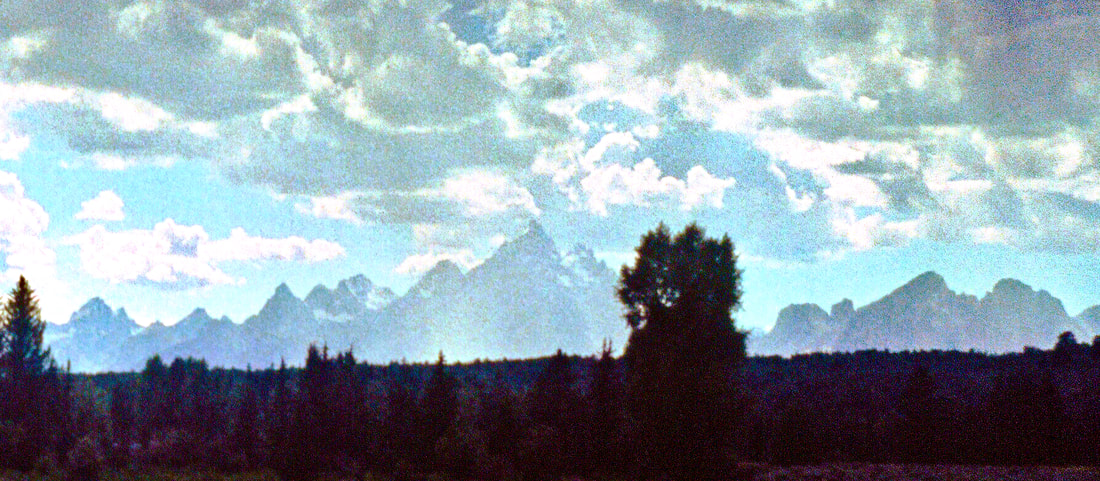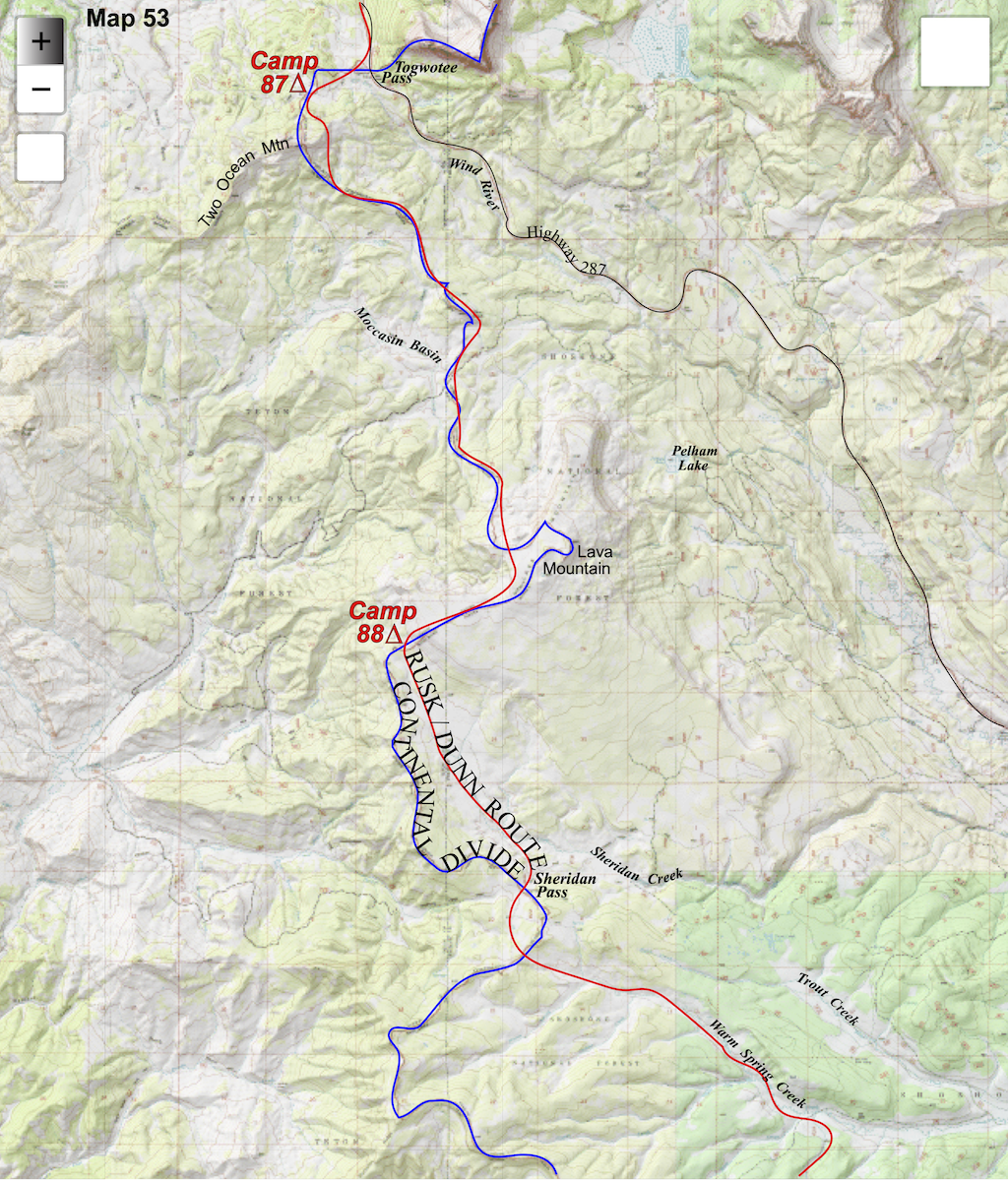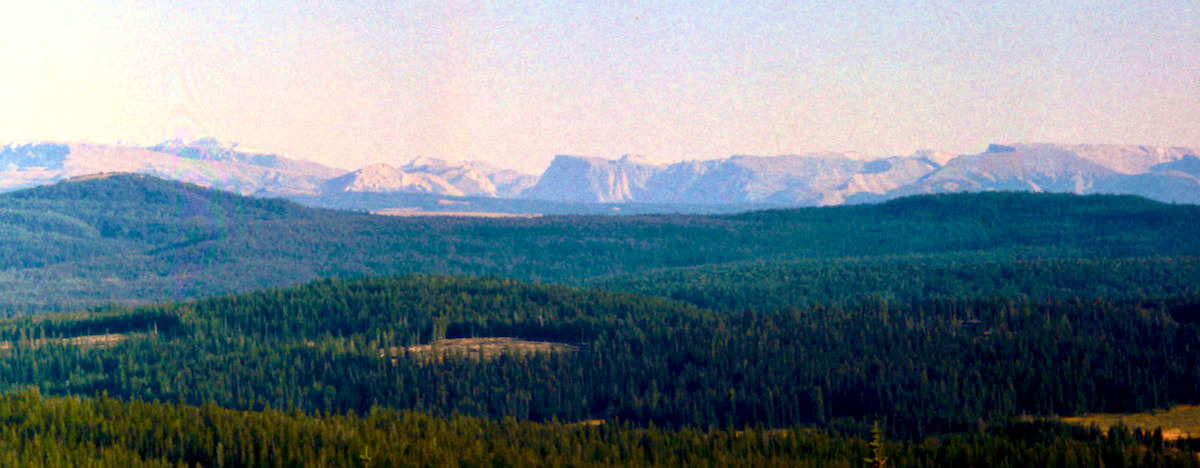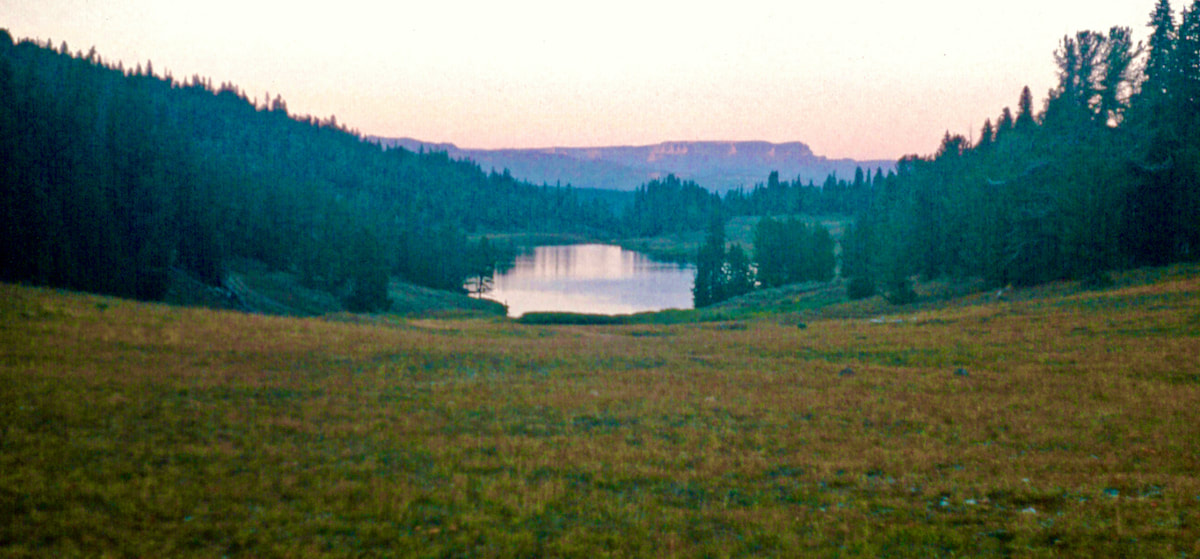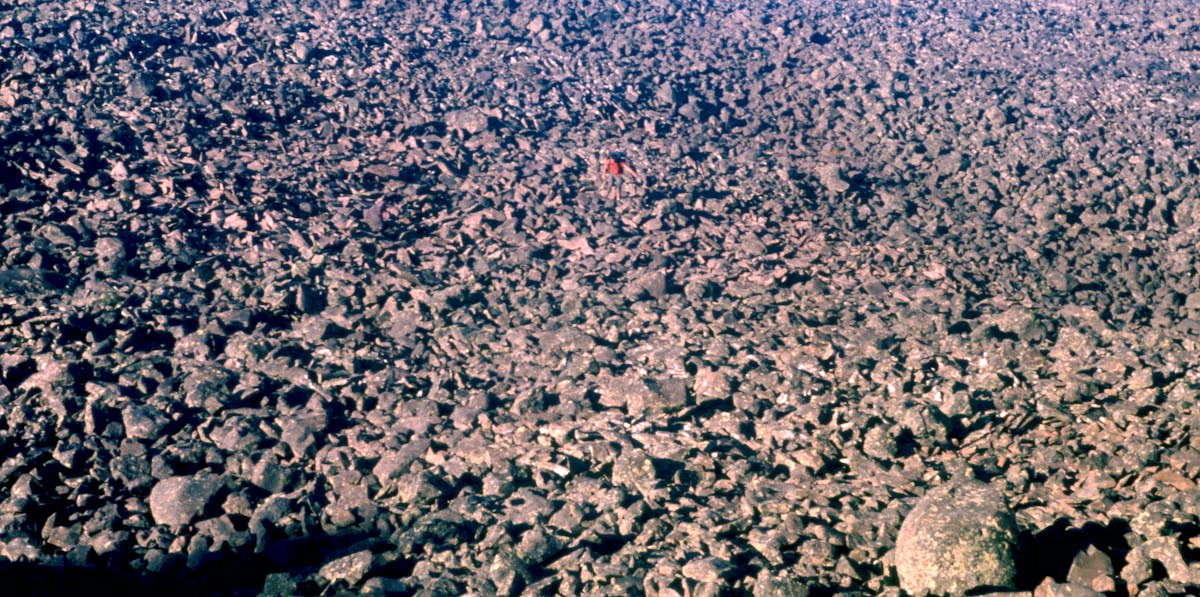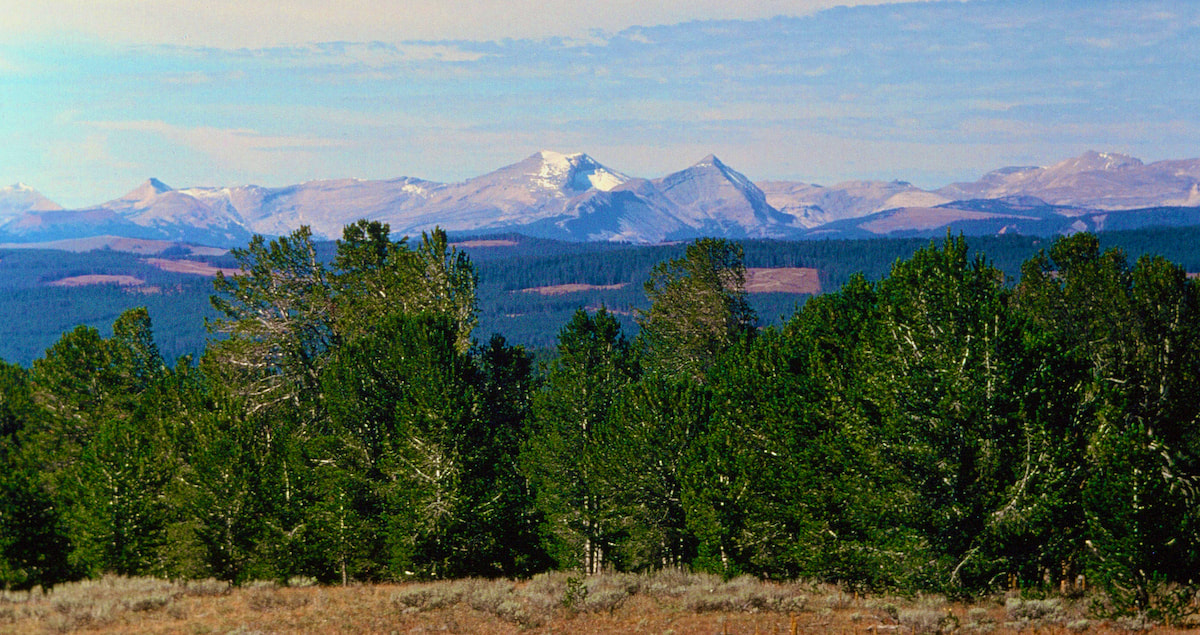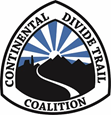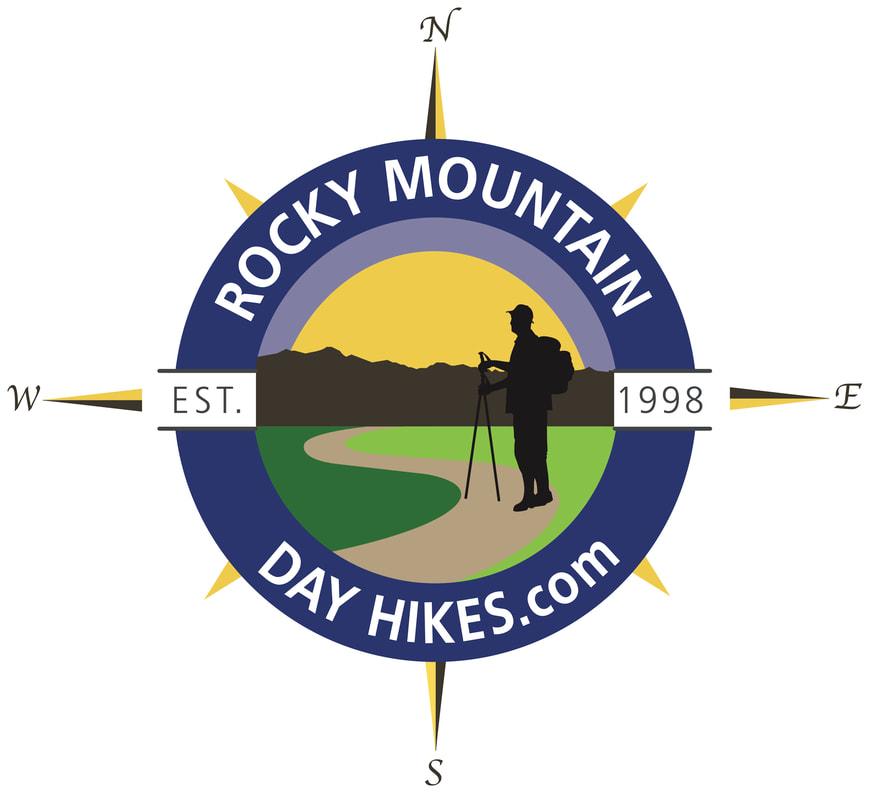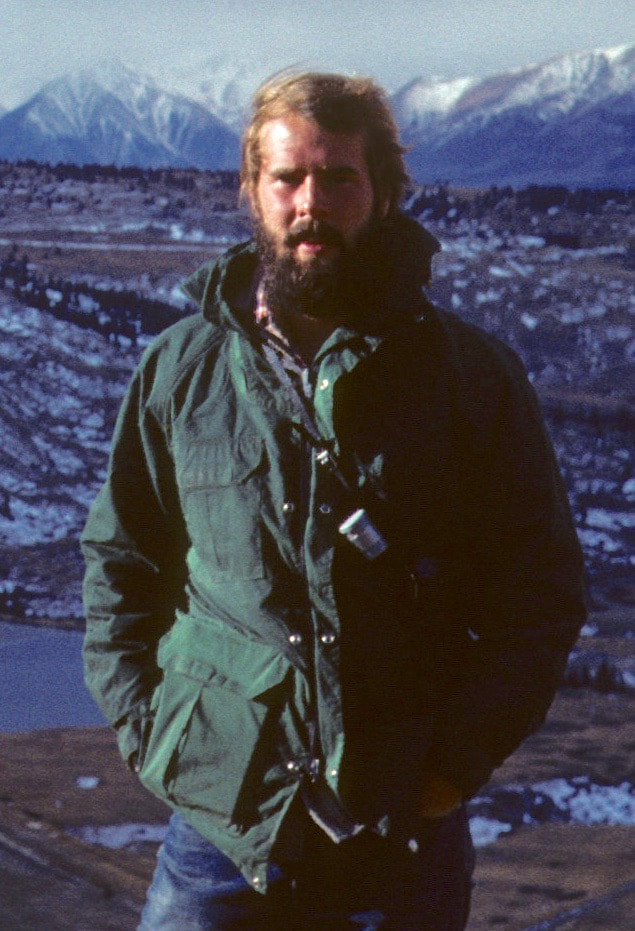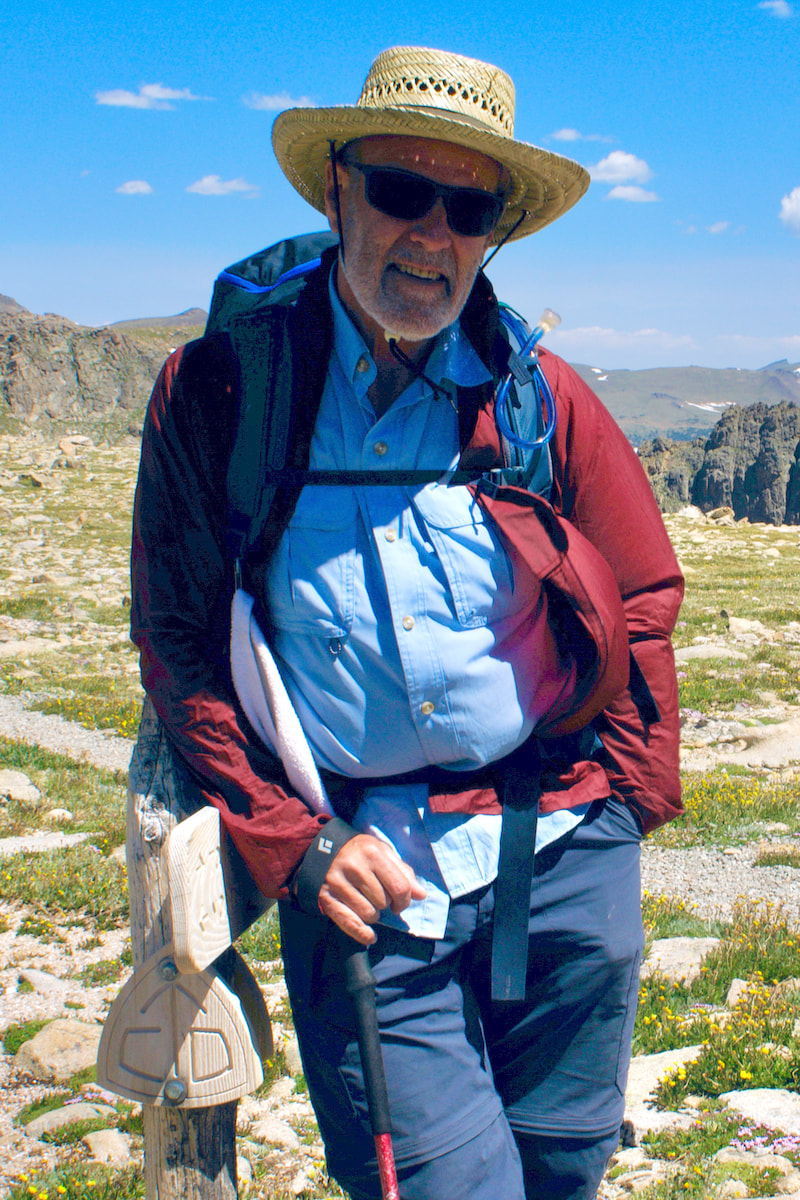The Continental
|
|
The late afternoon sun shadowing the Tetons shone across the Snake River Valley to cast alpine glow on the northern tips of the Wind River Range and clouds gliding under the sun created specters of moving light across the valley. We sat silent in camp. I was lost in a hundred mile stare, looking out at nothing but everything and feeling whittled down to a naked, nano-spec of whatever it was that was me. I was anxious in a way that I had not felt since the early weeks of the trip, and yet, I knew I should be really stoked about what was out in front.
climbing the Rocky Mountains had to offer, and most of it ran straight down the ridgeline of the Continental Divide which, per our specifications, would also be ‘the strictest line possible.’ So, that’s what we had planned for. And we did so in spite of the fact that the maps also showed a north/south trail system running along the toe of the peaks that would have made for a pretty logical backpacking route. the extra pounds necessary for climbing the miles of glaciated and rock-splintered ridgeline. Then, adding more weight and bulk to our packs was the warmer clothing we would need. Our plan also had us exposed us to autumn winds and weather at high elevations so we needed hats, gloves, mittens, shell parkas and extra wool clothes. Throw in two weeks’ worth of non-freeze dried food stuff and all the other backpacking crap we needed and our packs had ballooned into insufferable pigs, approaching the weight of a 100lb sack of cement. We were certainly strong, strong enough to shoulder the load, but by now our bodies were also fairly worn and tired from the previous 1,200 miles and this challenge here, in front of us now, was going to be an ordeal. I really didn’t know if we were strong enough to pull this off or not, but I had a feeling fantasy was about to have a head-on collision with reality. That first morning heading into the Wind Rivers was crisp, clear and, seemingly overnight, autumn colors had burst out all across the high country. We didn’t anticipate much in the way of trails at the outset so we started off cross-country, through open forest and rocky, highland pastures. typically skirt our way around a heard. Today, however, our packs were too heavy to play dosey-doe around the pasture with these hoofed hamburgers, so we just kept our heads down and maintained our direction with a slow, plodding pace until the cattle were behind us - which worked out surprisingly well. we came up onto the top of a massive slope buried in boulders. Looking down at all that chaos we’d have to descend with this dead pig on my back made my mojo sag. Descending the boulderfield was tedious, time consuming and unexpected, since I didn’t think we’d see this kind of terrain just yet. But there was something else I noticed that was more troubling; when I reached the bottom of the slope and looked back for Craig, he was still far up the hill and plainly struggling to fight his way down through the boulders. I sat down on a rock to wait. Craig wasn’t lagging because he was slow, it was more serious than that. My mind was starting to question how we should proceed, our entire plan right now depended on our ability to move through this kind of terrain with some semblance of speed. In another day or so our entire world was going to look like this, for days, and a lot of it was going to be much harder than coming off Lava Mountain. Craig finally joined me at the bottom of the boulderfield and propped his pack against a large rock to relieve his load and take in the afternoon view. There it all was, rolling tundra and shimmering peaks in the not-so-far-off distance, just out there waiting. Go to Part 46
0 Comments
Leave a Reply. |
Kip RuskIn 1977, Kip Rusk walked a route along the Continental Divide from Canada to Mexico. His nine month journey is one of the first, documented traverses of the US Continental Divide. Montana Part 1 - Glacier Ntl Pk Part 2 - May 11 Part 3 - May 15 Part 4 - May 19 Part 5 - May 21 Part 6 - May 24 Part 7 - May 26 Part 8 - June 2 Part 9 - June 5 Part 10 - June 7 Part 11 - June 8 Part 12 - June 11 Part 13 - June 12 Part 14 - June 15 Part 15 - June 19 Part 16 - June 23 Part 17 - June 25 Part 18 - June 27 Part 19 - June 30 Part 20 - July 5-6 Part 21 - July 7-8 Part 22 - July 9-10 Part 23 - July 11-15 Part 24 - July 17-18 Part 25 - July 18-19 Part 26 - July 19 Part 27 - July 20-21 Part 28 - July 22-23 Part 29 - July 24-26 Part 30 - July 26-30 Part 31 - July 31-Aug 1 Part 32 - Aug 1-4 Part 33 - Aug 4-6 Part 34 - Aug 6 Part 35 - Aug 7-9 Part 36 - Aug 9-10 Part 37 - Aug 10-13 Wyoming Part 38 - Aug 14 Part 39 - Aug 15-16 Part 40 - Aug 16-18 Part 41 - Aug 19-21 Part 42 - Aug 20-22 Part 43 - Aug 23-25 Part 44 - Aug 26-28 Part 45 - Aug 28-29 Part 46 - Aug 29-31 Part 47 - Sept 1-3 Part 48 - Sept 4-5 Part 49 - Sept 5-6 Part 50 - Sept 6-7 Part 51 - Sept 8-10 Part 52 - Sept 11-13 Part 53 - Sept 13-16 Part 54 - Sept 17-19 Part 55 --Sept 19-21 Part 56 Sept 21-23 Part 57 - Sept 23-25 Part 58 - Sept 26-26 Colorado Part 59 - Sept 26 Part 60 - Sept 30-Oct 3 Part 61 - Oct 3 Part 62 - Oct 4-6 Part 63 - Oct 6-7 Part 64 - Oct 8-10 Part 65 - Oct 10-12 Part 66 - Oct 11-13 Part 67 - Oct 13-15 Part 68 - Oct 15-19 Part 69 - Oct 21-23 Part 70 - Oct 23-28 Part 71 - Oct 27-Nov 3 Part 72 - Nov 3-5 Part 73 - Nov 6-8 Part 74 - Nov 9-17 Part 75 - Nov 19-20 Part 76 - Nov 21-26 Part 77 - Nov 26-30 Part 78 - Dec 1-3 New Mexico Part 79 - Dec 3-7 Part 80 - Dec 8-11 Part 81 - Dec 12-14 Part 82 - Dec 14-22 Part 83 - Dec 23-28 Part 84 - Dec 28-31 Part 85 - Dec 31-Jan2 Part 86 - Jan 2-6 Part 87 - Jan 6-12 Part 88 - Jan 12-13 Part 89 - Jan 13-16 Part 90 - Jan 16-17 Part 91 - Jan 17 End |
© Copyright 2025 Barefoot Publications, All Rights Reserved

